Blooming in the Shade
By Brad Willet, Fairfax Master Gardener Intern
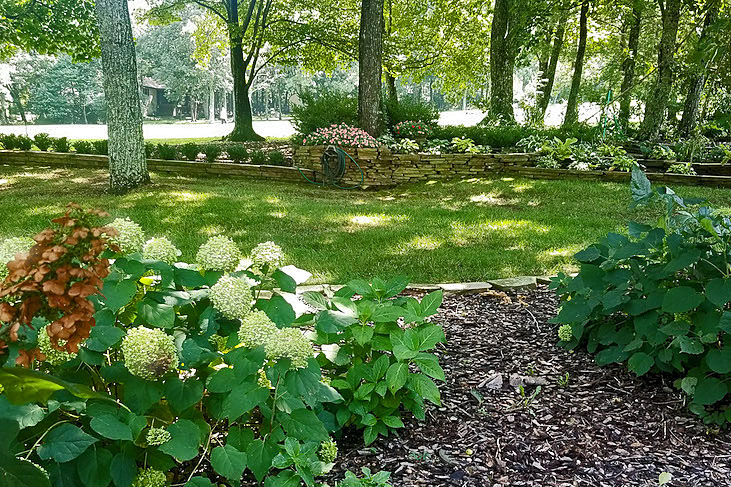 Shady areas of the garden or your landscape can provide much needed rest and respite with the oppressive summer heat. Those are areas of the garden where we can enjoy the time to get out of the sun, cool off, enjoy the day or even the evening. Shady spots in the garden sometimes just feel different. Sometimes they are cooler, sometimes the air seems fresh and this is also the area where there can be lots of color.
Shady areas of the garden or your landscape can provide much needed rest and respite with the oppressive summer heat. Those are areas of the garden where we can enjoy the time to get out of the sun, cool off, enjoy the day or even the evening. Shady spots in the garden sometimes just feel different. Sometimes they are cooler, sometimes the air seems fresh and this is also the area where there can be lots of color.
Gardening in the shade doesn’t have to be a challenge — although I’ll admit, it sure can seem like that at times. Oftentimes, shady areas can be under heavy tree canopy, or even those areas in our landscapes that compete with our built-up environment. Either way — there are many great ways to take advantage of this area in our gardens throughout the growing season.
One of the ways that shady gardens can be of additional benefit is that these areas are not as hot since they don’t have as much sunshine. However, this doesn’t mean that some shady areas aren’t particularly dry — they can be. You may also notice some shady areas seem to take longer to dry out after a rain. This could also be an advantage. You may end up saving water and mulching needs. Picking the right plant will greatly facilitate its success in your landscape.
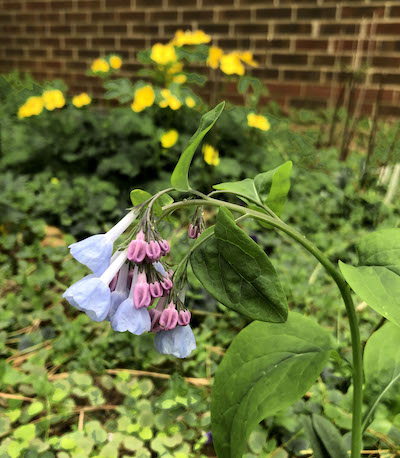
Virginia Bluebell (Mertensia virginica) foreground with Woodland Poppy (Stylophorum diphyllum) background
Ephemeral blooms in the spring would come from the dainty pink hues of Virginia Spring Beauties (Claytonia virginica), the uniquely colored Trout Lily (Erythronium americanum), and even sweet looks of Virginia Bluebells (Mertensia virginica). While each of these grows in early spring, they will all go fully dormant by summer, and it is recommended to add additional blooming plants to the areas to cover the spaces they leave behind. Planting these plants in masses of 3’s, 5’s or more will make a dynamic view of your spring shady garden and provide those great pops of color after a long winter. Shrubs and small trees that bloom this early in shade would include a Witch Hazel species (Hamamelis virginiana) sending out dainty flowers of yellow with a slightly spicy scent. The tree is rather grown almost like a medium shrub with an open form.
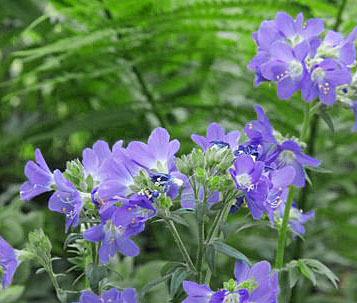
Jacob’s ladder (Polemonium caeruleum)
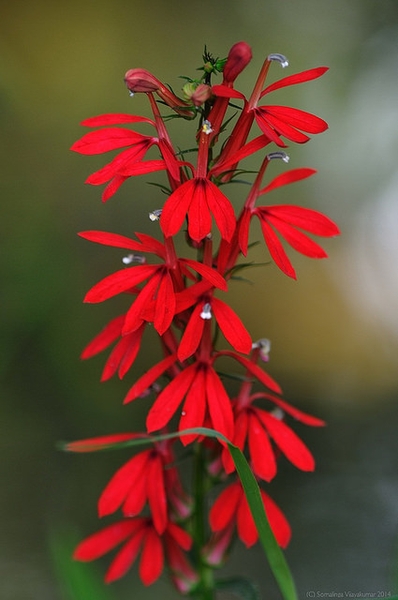
Cardinal flower (Lobelia cardinalis)
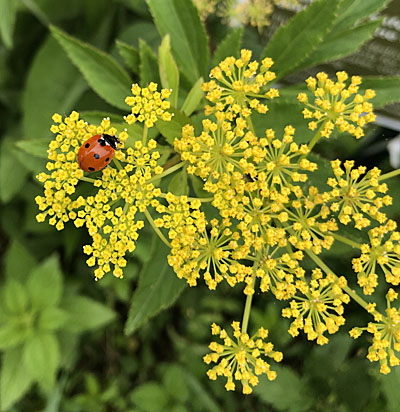
Golden Alexander (Zizia aptera) with a lady beetle
Overall the shade garden is hard to pass up and can be planted with a wide range of flowering plants. Since Victorian times, retreating the summer’s heat to the shadier areas of the garden has been a welcome pastime. Adding flowering plants to these areas, especially ones where turf has been challenging to establish, will not only help our pollinator species and wildlife, but add some pops of color to these areas throughout the season. Ideally having blooming plants throughout the growing season is a great way to encourage abundant visitors to your garden. While there are very few plants that will grow in dense shade, areas that are open to a bit of sunlight during the day or even bright shaded areas will reward you with a great diversity of blooms, colors and enjoyment throughout the season.
Resources
• Native Plants for Northern Virginia, Plant NoVA Natives Campaign
• Common Native Shrubs and Woody Vines of Virginia, Virginia Department of Forestry
• Selecting Plants for Virginia Landscapes: Showy Flowering Shrubs, Virginia Cooperative Extension
Publication HORT-84P
• Native Plants for Conservation, Restoration and Landscaping, Virginia Piedmont Region, Virginia
Department of Conservation and Recreation
• Digital Atlas of the Virginia Flora, Virginia Botanical Associates (Database)